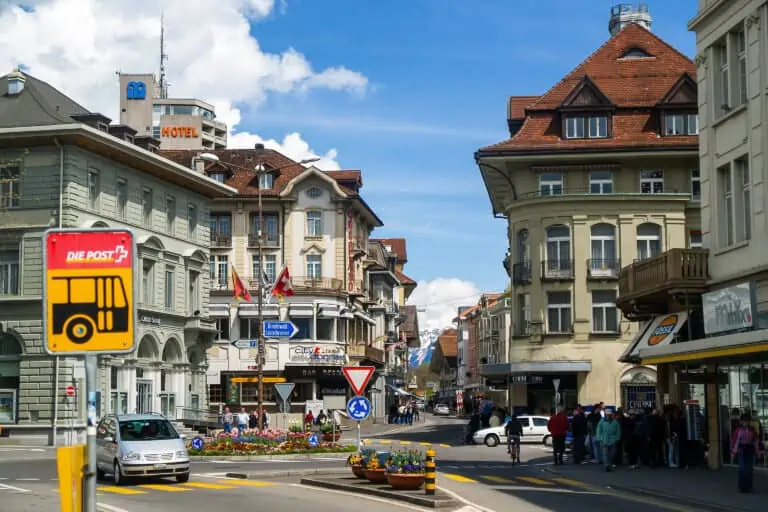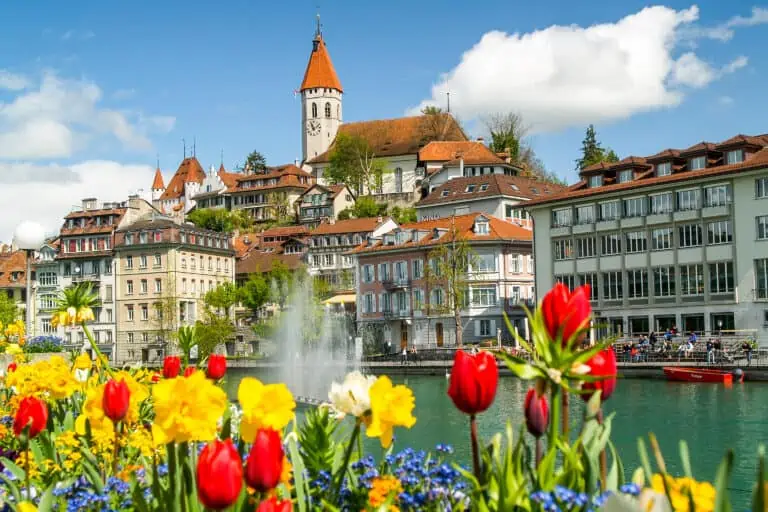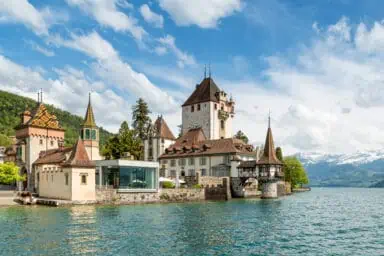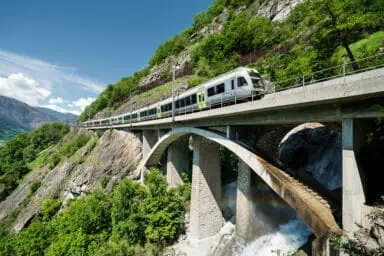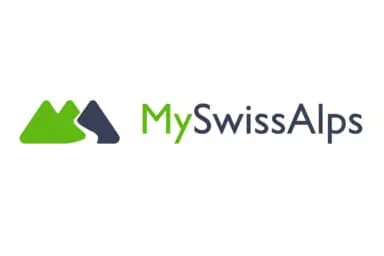Sightseeing in and near Thun 
Find activities in Thun and the Lake Thun region
Offered by Klook: www.klook.com
- Best price guarantee: Klook will refund double the difference if you find a lower price.
- Extra Support: if you book here, MySwissAlps can also assist if you have questions about your order.
Offered by MySwissAlps: www.myswissalps.com
- Offer from one of our best partners.
- Extra Support: MySwissAlps can assist if you have questions about your order.
Offered by GetYourGuide: www.getyourguide.com
- Easy, online, free cancellation in most cases
- Best Price Matching: GetYourGuide will pay the difference if you find a lower price.
- Extra Support: if you buy here, MySwissAlps can also assist if you have questions about your order.
More things to see and in town
We recommend seeing the following in Thun:
- The historical old town, dating back to the 12th century. It can easily be explored on foot from the main rail station (www.thunersee.ch).
- The castle and its museum (www.schlossthun.ch).
- The Art Museum with its circular painting of Thun (www.thun-panorama.ch).
The famous castles of Lake Thun
The castle in Thun isn't the only one on the lake. There are 5 medieval gems in total. The other 4 are the Hünegg Castle in Hilterfingen, and the castles of Oberhofen, Schadau, and Spiez.
You can explore the castle interiors on your own between April/May and October, with the exception of the Schadau Castle. The admission fee is about CHF 10 per castle. A discounted combination ticket is available too: the "Schlösser-Card". Entrance is free if you have a Swiss Travel Pass.
Alternatively, you join guided tours with all sorts of historic themes. These need to be booked in advance.
Each of the 5 castles offers a restaurant or cafe. The Schadau Castle is specifically used as a high-end restaurant, hotel, and venue for weddings and other events.
Hiking from castle to castle is very inviting too. You can walk a 3-hour path along the castles of Spiez, Thun and Schadau for example.
Mountains near Lake Thun
The below mountaintops near Thun aren't as famous as some of the other Swiss peaks. But we highly recommend them: we love the wide roundabout views over the large blue Lake Thun, the high Alps in the south, and the hilly landscape in the north.
- The Niesen, to be reached from Mülenen.
- The Niederhorn above Beatenbucht and Beatenberg, on the mountain ridge north of Lake Thun.
- The Stockhorn, to be reached from the Simmen Valley.
The Beatus Caves
The Beatus Caves ("Beatushöhlen" in German) are stalactite caves inside the rocky slopes north of the lake. They're just above Beatenbucht, which can be reached by bus, boat, or car.
The caves are accessible year-long. A tour guide will tell you all about the history of these magical caves. We think they're a great bad-weather excursion, and perfect for families.
Travel info and map of Thun 
How to reach Thun by train
We recommend traveling to Thun by train. There are efficient connections from the Swiss airports and major towns. Examples:
- 1h40 from Zurich Airport, 1h20 from Zurich
- 1h50 from Basel EuroAirport, 1h25 from Basel
- 2h40 from Geneva Airport, 2h30 from Geneva
- 0h20 from Bern
- 0h35 from Interlaken Ost
- 1h00 from Fribourg
- 1h15 from Neuchâtel
- 1h25 from Lucerne
All connections can be found in the timetable.
How to reach Thun by car
You can drive to Thun using Switzerland's motorways: the A1/A6 from Basel, the A3/A1, and A6 from Zurich, or the A1/A6 from Geneva.
How to travel in Thun and the nearby villages
The historic center of Thun is small enough to get by on foot. The rail station of Thun is just minutes away. Many hotels are within walking distance from the train station as well.
If you're located in the outskirts of Thun, or in one of the nearby villages, you can use public transport.
- There's a regional train to Gwatt south of Thun.
- A bus gets you along the entire northern shore of Lake Thun, to villages such as Hilterfingen, Oberhofen, and Merligen. It continues all the way to Interlaken east of the lake.
Rail passes for Thun
- If you plan to focus on the Bernese Oberland during your stay in Thun, we recommend you look into the Berner Oberland Pass.
- If you'll be exploring other parts of Switzerland too, a Swiss Travel Pass, Swiss Half Fare Card, or other nationwide pass makes more sense.
Our comparison guide helps you choose the right pass.
The town of Thun on a map of Switzerland
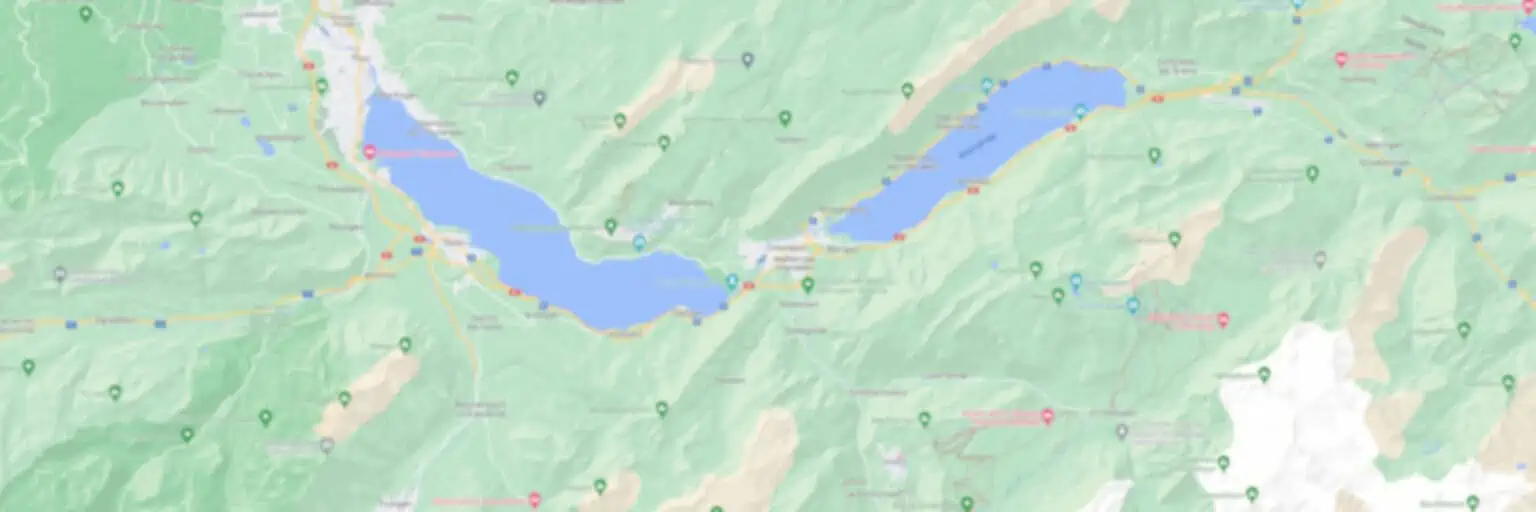
When to visit Thun 
We prefer spending time in Thun from early April to late October and early December to late December. But due to its central location and many facilities, we think it's a good base town in other seasons too.
Thun from April to October
The surroundings of Thun and its lake are beautiful from spring to summer. The green hills and deciduous trees take on lovely spring blossoms in April and May, and autumn shades in October.
July and August are the top tourist months, when boats at Lake Thun operate most frequently. You can make all high-altitude excursions as well, such as mountain visits and alpine hikes.
These summer months can be quite warm in Thun. This could be a disadvantage, but the lake and nearby mountain tops provide opportunities to cool down.
Thun in December
Thun isn't at high elevation, so don't expect snow during the holiday season. Thun is an ideal base town if you're planning a trip that focuses on city visits and Christmas markets though.
Thun during low-season months
We feel that the town and its immediate surroundings look less attractive from December to March. Thun isn't a typical winter sports town. You'll have to travel to reach ski and snow areas.
But if you want to combine snow excursions with cultural activities and city trips, Thun is a good location to base yourself.
Weather in Thun 
What is the weather in Thun like?
Thun is in a relatively mild and moist climate zone. Average daytime temperatures are 20°C to 25°C in summer, and 3°C to 7°C in winter.
The rainiest months are May to August. Although late-afternoon showers are more common than continuous rain in summer, long moist spells do occur. It can just as well be perfectly sunny for days or weeks on end though.
Does it snow in Thun?
It can snow in Thun, but this is not likely, not even during the coldest winter months January and February. Thun is too low to have a good chance of snow.
You'll be within reach of ski and snow areas though: day trips to the Simmen Valley, Kandersteg, Adelboden, and the Jungfrau Region are possible.
5-day weather forecast for Thun
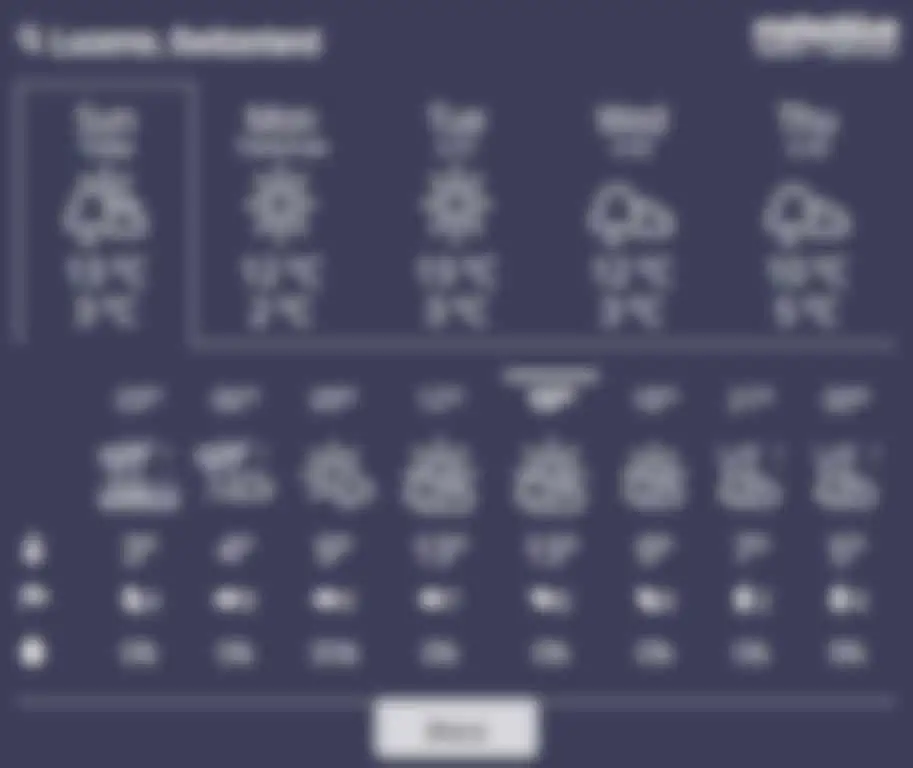
Location and scenery of Thun
The surroundings of Thun
Thun is situated on the western side of Lake Thun. This is an appealing holiday region with pretty villages, medieval castles, and access to mountaintops such as the Niederhorn and the Niesen.
East of town, the lake stretches out toward Interlaken. The hills and mountain ridges get higher toward the east. On clear days, you can view the beautiful Bernese Alps in the south-east directly from town. West and north of Thun is a lower area with gentle hills.
Thun’s central location in Switzerland
Thun is a strategic location to spend your holidays. It’s only half an hour by train from the capital Bern, there are boat trips directly from town, and very good train connections to many destinations. These include the Valais, the Simmen Valley, and the Jungfrau Region.
If you want to explore the Bernese Oberland but also other parts of Switzerland, Thun makes an excellent base.
Pros and cons of Thun
The location of Thun is a big plus. Also, the town is very atmospheric. It has a beautiful old town center with ancient alleyways and wooden bridges. The blue river Aare is a prominent feature.
Thun is big enough to offer shops, hotels, restaurants, museums, and other facilities to have a good time, even if the weather isn’t favorable.
Thun is close to, but not in the mountains. It takes over half an hour to reach Interlaken, from where you can explore the Jungfrau Region. Other mountain areas, such as those around Kandersteg, Zweisimmen, or Adelboden, require a 40- to 60-minute ride by public transport.
Other towns on Lake Thun
Spiez and Faulensee
If you prefer a somewhat smaller town closer to the mountains, consider Spiez. This scenic village is a bit further east on Lake Thun and closer to Interlaken. Spiez too is located very centrally and offers an appealing marina and castle.
Faulensee is further to the east: a nice little village with all the basic facilities and good train connections to both Interlaken in the east and Spiez/Thun in the west.
Hünibach, Hilterfingen and Oberhofen
If you’re looking for smaller villages and don’t mind a less central location, look into Hünibach, Hilterfingen, and Oberhofen. These villages are just east of Thun and directly on the northern shore of Lake Thun.
There are brilliant views of the lake and mountains. There’s no train station in these villages though: you’ll have to use a bus or car.
Beatenberg
A village with an alpine feel and breathtaking panoramic views is Beatenberg. It’s high on the northern slopes that rise from Lake Thun, at a 40-minute bus ride from Interlaken. Beatenberg is a great spot to soak up the views, but it’s not convenient for day trips to other areas.
Mountain villages
If you actually want to stay in the mountains, you may want to look into other areas of the Bernese Oberland, such as the Jungfrau Region. Kandersteg, Adelboden, Zweisimmen, Lenk and Gstaad may interest you as well.
Or consider an entirely different mountain region: the Valais or Graubünden.
Other websites of interest
- www.thunerseeschloesser.ch: the castles on Lake Thun
More about the Lake Thun area 
